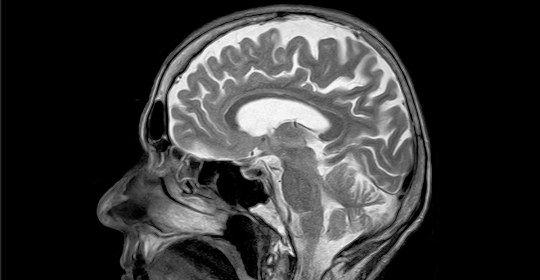
Cerebrovascular Disease – A Grave Neurological Disorder
Neurologists are specialist doctors who study the human brain and its related functions. They focus on the science of neurology. Neurologists in the UAE provide comprehensive diagnostic treatment for various neurological disorders connected to our nervous system.
Neurological diseases include cerebrovascular disease, headaches, peripheral nervous system disorders, brain infections, demyelinating diseases, Parkinson’s disease, Alzheimer’s disease, epilepsy, spinal cord disorders, speech, and communication-related disabilities.
While neurologists are mainly responsible for different types of neurological conditions, they conduct an in-depth study of all the symptoms to start a diagnostic treatment procedure.
Some common neurological symptoms include:
Muscle weakness
Coordination issues
Lack of concentration
Confused behavior
Slow reaction
Dizziness
Sensory issues related to sight, smell, or touch
Neurologists also specialize in treating cerebrovascular disease that includes disorders in the blood vessels and arteries that supply blood to the brain area. Cerebrovascular is primarily caused by atherosclerosis, leading to a stroke if not treated on time. Other cerebrovascular conditions include carotid stenosis, vertebral stenosis, aneurysms, and other vascular malformations. Blood flow abnormalities may occur due to stenosis, clot formation, hemorrhage, and blockage.
The Vital Blood Flow to the Brain Region
Blood reaches the brain via two sets of arteries. One is called the carotid arteries and the other is known as vertebral arteries. Carotid arteries supply blood to the frontal part (two-third) of the brain. And the vertebral arteries supply blood to the back third portion of the brain.
As the brain is dependent on the two main arteries for its regular blood supply, the arteries must be kept healthy. If the carotid arteries are blocked due to plaque, it can cause an ischemic stroke. If the arteries are ruptured, then it can lead to a hemorrhagic stroke.
Irrespective of the underlying conditions, proper blood flow to the brain should be restored quickly. Without oxygen and blood supply, the brain cells may get permanently damaged or even die within a few minutes. Once the brain cells are dead, they cannot regenerate thus resulting in grave damage in the form of physical or mental disabilities.
Atherosclerosis
This condition is the main cause of cerebrovascular disease. Atherosclerosis is detected when cholesterol levels in the body rise, in addition to inflammation in the arteries that supply blood to the brain. The thick waxy fat or plaque can narrow the blood supply or even block it suddenly.
Other Types of Cerebrovascular Diseases
Transient ischemic attack or TIA is a temporary form of cerebrovascular condition that fortunately doesn’t leave any permanent damage. When an artery carrying blood to the brain is temporarily blocked, it can cause distressing stroke-like symptoms. However, the blockage is dislodged before it can damage and cause a real stroke.
TIA Symptoms are:
A sudden feeling of numbness in the hand, leg or face area
Experiencing sudden trouble in speaking
Feeling a sudden partial loss of vision in one or both the eyes
A sudden feeling of dizziness or difficulty in walking
Severe headache with no apparent cause
You need to get immediate emergency help if you are experiencing TIA symptoms. You can contact a reputed neurologist in Dubai or your primary care physician. Doctors suggest that almost 25 to 30 percent of people who undergo a major stroke first experience a prior warning in the form of TIA symptoms. It is advisable to seek medical attention so that a diagnosis can be made and treatment be started at the earliest.
Carotid Stenosis
When plaque affects the carotid arteries, they become blocked by the accumulation of fats or cholesterol. The most severe form of blockage results in carotid stenosis. Doctors can detect the condition (asymptomatic) if the carotid arteries are producing an abnormal sound known as bruit. This can be found out through a physical examination with a stethoscope. Other diagnostic tests like carotid duplex and Doppler ultrasound can also determine the condition. Medications may include antihypertensives and anticoagulants to reduce the risk of stroke.
Cerebral Aneurysms
Cerebral aneurysm disorder is also known as cranial. It is a neurological condition wherein a blood vessel in the brain region weakens and starts to bulge or balloon out of the vessel. Unruptured cerebral aneurysms can be found through an MRA or an angiogram testing. A ruptured cerebral aneurysm is usually seen with the help of a CT scan or a lumbar puncture test.
A surgical opening of the skull can be done to correct the aneurysm or to isolate it from the bloodstream. However, surgical repair cannot be possible if the condition is deep within some unreachable parts of the brain. Angiography can be used to maintain the normal blood flow in the brain. Doctors may also suggest endovascular therapy, which is a non-invasive technique.
FAQs
What is the treatment of cerebrovascular disease?
Treatment for neurological cerebrovascular disorder may involve making constructive lifestyle changes, taking medication, or going in for surgery.
Name some of the risk factors for cerebrovascular disease?
High BP, hypertension, smoking, unhealthy diet, obesity, lack of exercise, diabetes, high cholesterol level, and excessive consumption of alcohol are some of the major risk factors leading to cerebrovascular disease.
Is the cerebrovascular condition hereditary
CVD or cerebrovascular disease can be caused due to numerous factors that include environmental conditions, vascular risk factors, and genetic reasons.

